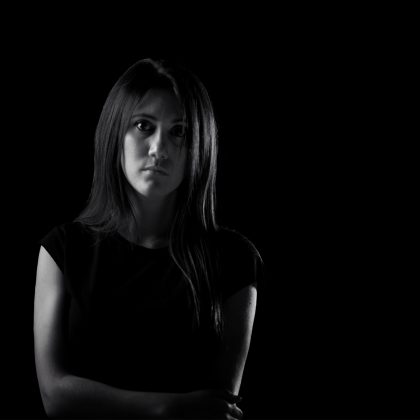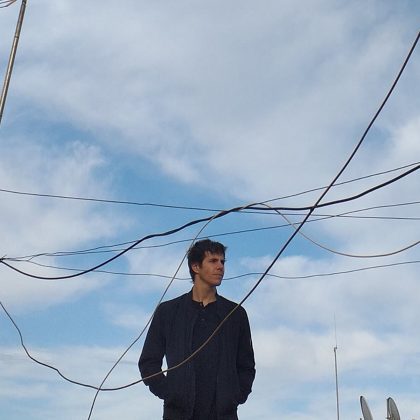Fast Eddie “Acid Thunder”
The birth of our underground brand Factory 93 not only brought on an adrenaline rush reminiscent of the renegade warehouse era of raving—on which Insomniac was founded—but it also had us thinking back to all the people, places and parties that made this whole operation possible. And with that came a burning desire to crack open our collection and dust off the classic records we couldn’t live without. Through our From the Crate series, we break out seminal and obscure cuts alike, imparting some knowledge in the process.

Thirty years after Fast Eddie’s “Acid Thunder” saw its first release on 12-inch, it’s easy to forget there wasn’t a single “original” version of the track, but four different ones, all mixed by different producers. Nevertheless, it was the artist’s own version—the “Fast Thunder” mix, all instrumental with the 303 bassline, machine claps and cowbell—that became the instant classic. Today, it’s the one we largely think of as the definitive “Acid Thunder”—not the versions with vocals on them, like the one mixed by Joe Smooth.
Great as it is, “Acid Thunder” isn’t Fast Eddie’s most iconic recording. That would come later, in 1988, when he cut “Hip-House,” the track that gave the subsequently short-lived subgenre its name. “Fast Eddie didn’t want to do house music anymore,” Tyree Cooper told 5 Magazine in 2008. “I think he was still signed to DJ International… Somehow they came to an agreement to let Eddie rap on the tracks and shit.” They weren’t even Fast Eddie’s most successful records—his four Billboard Hot Dance Music/Club Play chart hits all postdate it, starting with 1989’s “Git on Up.”
Nevertheless, “Acid Thunder” is a monument—yet especially in its time and place, it was a subtle one. As Peter Shapiro wrote in The Wire of Sleezy D’s “I’ve Lost Control” and Phuture’s “Acid Trax”—the Trax Records 12-inches that kicked off the acid house craze in Chicago—“These records still came out of nowhere and are so strikingly avant-garde that they belong among a unique class of misuses of technology that have redefined music… The tweaked 303 sounded like someone had poured battery acid over a synth and its circuits were shorting.”
“Acid Thunder” sounded like that was happening only occasionally—after the stair-step-ascending 303 line had been established over the dramatically pausing machine beat. Where many acid tracks, before and after, tried to bat you over the head with their alien strangeness, Fast Eddie was content to let his 303 nudge you insistently. “Acid Thunder” was a huge hit among British DJs soaking in the 303 sound during UK rave’s first Summer of Love. The August 1988 issue of the British fanzine Soul Underground featured “Acid Thunder” at #1 on the Top 15 of “Northern house” from Manchester’s Spin Inn.
The label that put “Acid Thunder” out was DJ International, an imprint whose many great early house records remained out of print for decades, only recently coming back into wide availability. Founder Rocky Jones had run Audio Talent, a Chicago record pool that distributed new promotional 12-inches, provided by record labels, to local DJs.
“Rocky was getting records from [early Chicago house labels] Trax, Jes’ Say, and Street Fire,” Trax cofounder Vince Lawrence recalled. “We were fueling Precision, which was Larry’s label. We were providing talent and music for that label, too, so he was getting all these records from us.”
Jones decided to start another label, DJ International, and scored a British distribution deal with London Records. Jones also paid for a handful of UK reporters to attend a Chicago press junket to write stories about the city’s house scene. He could afford it: In 1987, Jones told a Spin reporter that DJ International’s 12-inch singles cost an average of $3,000 to make, sometimes even as low as $50.
As such, the Brits also had a lock on covering this music, much to the chagrin of Chicagoans. “It was very surreal, because the only way that you could learn anything about what was going on in Chicago was to buy NME and Melody Maker and The Face and ID magazine,” Tommie Sunshine, who grew up in suburban Chicago and began hitting the city’s house lofts at the end of the ‘80s, once told me. “The Europeans were the only ones who were even talking about what was going on in Chicago, so if you wanted to read anything about what was going on with Fast Eddie, you had to buy a $7 European magazine so you could read about what was going on in your own vicinity.”
Chicago acid went into remission by the beginning of the ‘90s—but it didn’t take long for those tracks to sire a new wave of 303-based artists. In 1992, Dutch label Djax-Up Beats began licensing a handful of late-‘80s Chicago acid (though many of the artists would subsequently claim Djax had ripped them off). Writing about this new wave of acid in late 1992 for the Brooklyn rave zine Under One Sky, DJ and producer Adam X counted Fast Eddie as one of “the main old-school influences on the sounds of today.”
“Fast Eddie never got his due, really,” Sunshine said of Fast Eddie, with whom he collaborated on the 2014 track “The Man.” “That guy was really good and made really sick tracks. ‘Acid Thunder’—that was the blueprint for, like, all of ‘90s techno.”





